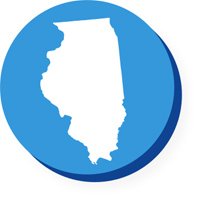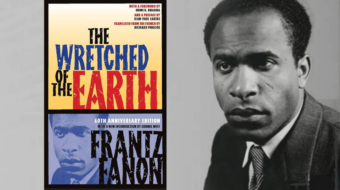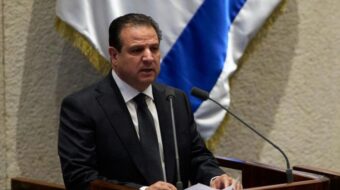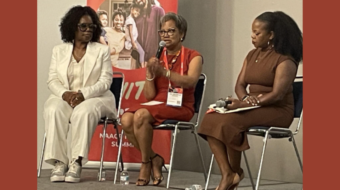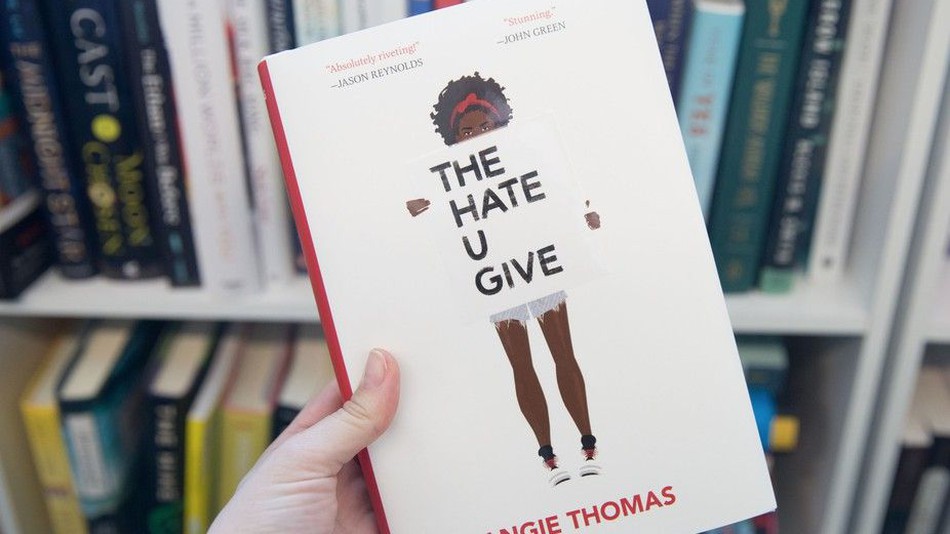
My son Elijah had the school assignment of reading a couple of books of his choice over the summer before starting seventh grade. Following the recommendation of a colleague who teaches young adult fiction, I suggested to him Angie Thomas’s best-selling young adult novel The Hate U Give. I had been wanting to read it, especially since seeing the movie preview, and I was hoping he would want to read it with me so we could talk about it. I’m a college professor of literature, and his insights always help me in my work. Needless to say, I was ecstatic when he agreed.
Toward the end of summer, when he was working on the book reports he had to write, he came to me and asked me who I thought would be considered the antagonist in The Hate U Give. I paused a bit, because I usually don’t think in these terms any more when it comes to studying and talking about a literary work, and then I challenged the question in my typical wise-ass dad way, “Who wants to know?”
Never phased by me, he explained that his assignment had a series of questions he had to answer about each book he read, and that was one of them. The question, he elaborated, was somewhat confusing to him when it came to thinking about Thomas’ novel, since there was no one clear character to identify as the antagonist. He wanted to know if I thought it made sense, if it would be ok (meaning would his teacher accept it), if he wrote that the antagonist was police brutality or racism.
Of course, I was delighted and more than a little proud that Elijah was able think in more broadly and incisively analytical ways both about the novel and the world. As I reflected further, though, it also occurred to me that the traditional categories through which we are trained to analyze literature and, by extension, our larger world constrain us, even divert us, from accurately and fully comprehending the power dynamics and relationships at work in the systems we inhabit.
Most prevalently, I would suggest, we are taught to focus on our social challenges as rooted in the behaviors of individuals (or, in the case of a novel, characters) rather than as systemically conditioned, as the inevitable products of the power dynamics, relationships, and operations of the social world we as humans have created, and into which we socialize our population.
Read People’s World writer Michelle Zacarias’s review of the film adaptation of The Hate U Give.
It troubled me that Elijah experienced uncertainty in himself rather than having a greater comfort in recognizing, as he did, the insufficiency of the categories framing the questions he was supposed to answer. What I witnessed, when he came to me, was a young mind trying to unshackle itself from the easy categories so often socially bestowed on us for seeing and, more to the point, making judgments about the world. He wanted permission, in his uncertainty, to let go of this way of understanding literature and the world precisely because this way does not contain or even encourage a genuine, accurate, and complex understanding the world.
Terms such as “protagonist” and “antagonist” invite us to arrive at easy judgments rather than thoughtful and considered understanding. That Elijah in his own way experienced discomfort in these categories owes much, I am guessing, to the complexity and care with which Thomas develops her characters and represents issues of racism, hate, crime, gang life, and police violence in the novel.
Khalil, the friend of the central voice and character Starr Carter, who is shot by a white police officer and killed after being pulled over and doing nothing, is a member of a gang and involved in drug dealing. And yet we learn that he was faced with the choice of going without food and other basic necessities for him and his family or joining a gang. Thomas makes it difficult for us to morally evaluate Khalil’s behavior in and of itself, outside of social context or without considering the larger economic forces and lack of opportunity that create this choice for him. Similarly, Starr’s white friend Hailey is well-intentioned and yet persistently racist and resistant to self-reflection.
Starr’s Uncle Carlos is an African-American police officer serving on the same force as the white officer who killed Starr’s friend. He must grapple with his own intentions of serving the public good and enforcing justice while working in what Thomas represents as a racist and corrupt system. Starr’s dad, Big Mav, once incarcerated for drug crimes in the same racist economy and carceral state to which Khalil fell victim, is now a pillar in his community.
One could go on discussing the complexities of the novel, but the point is that The Hate U Give challenges us to think beyond individuals as antagonists and protagonists and to think about the systems we create informed by their own distorted and inhumane moralities, that operate in racist ways to criminalize people of color, segregate neighborhoods and schools, economically marginalize people of color, and constrain opportunities, and so forth. While our current legal system subjects individuals to special kinds of prosecution for behaviors it deems hateful, Thomas in The Hate U Give, while obviously representing individual behaviors as racist or hateful, also asks us to think about the ways hate and racism are features built into our overall social system, not merely individual behaviors that exist despite, or as aberrations from, the system. Rather the hateful and racist behavior of individuals Thomas represents as expressions and consequences of our social system, not as violations of the norms and values of that system.
In this sense, as Thomas asks us to think about morality, about the values of good and bad, from a systemic rather than narrowly individualist perspective, the tact of the novel shares much in common with some of Robin Diangelo’s analysis in her trending book White Fragility: Why It’s so Hard for White People to Talk about Racism.
One of Diangelo’s arguments is racism is furthered by what she calls the good/bad binary that characterizes the U.S. moral code since the civil rights movement. As she puts it, “After the civil rights movement, to be a good, moral person and to be complicit with racism became mutually exclusive. You could not be a good person and participate in racism; only bad people were racist.” The racists were those who engaged in extreme acts of violence against people of color or gave voice to extreme expressions of prejudice. As Diangelo puts it, “In other words, racists were mean, ignorant, old, uneducated, Southern Whites. Nice people, well-intended people, open-minded middle-class people, people raised in the ‘enlightened North,’ could not be racist.” Diangelo and Thomas, while not dismissing or neglecting to consider what individuals do, want us to think about the morality that is systemically encouraged and promoted in our world.
Thomas, moreover, as I alluded to above, beyond just looking at “white” behavior, also asks us to look at African Americans differently, to dismantle the racist lens through which the dominant culture views African Americans, seeing them as criminals, drug dealers, and so forth, and instead to explore the systemic processes of our racist carceral state that criminalizes people of color.
This is not to say that people of color do not violate laws and deal drugs and engage in gang activity; rather, it is to say, as the novel asks to us to see, that people of color, like all people, are multidimensional and make good and bad choices and also that racism creates a world of much more constrained and difficult choices for people of color. The novel asks us to understand these socially and economically constrained contexts that condition individual behaviors.
In moving beyond a narrow individualist perspective, The Hate U Give, though, also asks us to understand the category of “protagonist” in profoundly different and important ways. While Elijah asked me for help in identifying the antagonist in the novel, he felt confident about pointing to Starr Carter as the protagonist. And yet this type of thinking also falls prey to a disarming individualist mode of thought that impoverishes our understanding of the complexities of the American self, of who we are.
I pushed Elijah to think about where Starr got her value system; about who supported her emotionally, spiritually, and financially; about who taught her and provided guidance and models for her. Many nurture, guide, parent, provide for and teach Starr. Her father, Big Mav, takes his guidance from the Black Panthers, Malcolm X, Tupac, and the figure he calls Black Jesus, among other sources; and these legacies and cultural traditions make Starr who she is and shape the choices she makes.
She herself in the novel learns to become an activist because of the activist lawyer who represents her; because of the history of political resistance and movements in African America; because of Tupac, Will Smith, and other cultural producers; because of her parents and her extended family; in short, because of many forces and traditions that have shaped her. It is too narrow to say Starr is the protagonist.
The novel, if read from a systemic, historical, and collective perspective, as opposed to an individualist perspective that urges us to identify an individual character as the protagonist, has many protagonists — from Martin Luther King to Malcolm X to Tupac to the activist lawyer to Starr’s family to her church community and so on.
Admittedly, we typically aren’t taught to read this way. Elijah wasn’t, and he was resisting reading narrowly in terms of individual antagonists and protagonists. Bless him.
Understanding the historical, social, and cultural forces and traditions that shape us is crucial for us in understanding not just who we are and how our world works but also for understanding how we can change the world and become what we want to be. Arguably, taking this approach will also help us understand that we are stronger together, that we as individuals are only possible because of all of our co-protagonists.
The Hate U Give, in providing us this perspective for social analysis and for understanding racism, hate, and ourselves, gives us, in fact, a way finally to love, because recognizing others and ourselves in our full complexity and humanity is a big step to reaching the height of relating to people and ourselves lovingly and powerfully. In doing so, it inspires us to act and to do so as a movement, drawing on the many revolutionary traditions of people’s self-activity our history provides us. In short, this young adult novel provides the youth in our culture with models of empowerment and activism.


